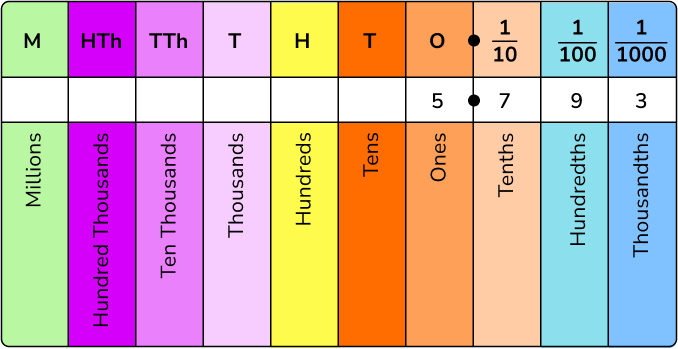Understanding the Dimensions 9.61×3.4: All You Need to Know
Introduction to 9.61×3.4 Dimensions
In various fields such as engineering, manufacturing, and design, dimensions play a crucial role in determining the specifications and usability of products and structures. One such specific set of dimensions that has gained attention is 9.61×3.4. These numbers, though seemingly simple, can represent a variety of measurements depending on the context in which they are used. Understanding these figures thoroughly can be key to ensuring accuracy and efficiency in applications ranging from architecture to product design.
In this article, we will delve deeply into the 9.61×3.4 measurements, exploring its meaning, practical applications, and significance in various industries. This detailed guide will give you insights into why these numbers matter and how they influence the processes around us.
What Does 9.61×3.4 Mean?
At its core, the term “9.61×3.4” refers to a set of dimensions—likely width and height or length and width, depending on the context. These figures can represent the size of an object, the proportions of a product, or even specifications for particular designs in architecture or engineering. The combination of 9.61 and 3.4 could also refer to a ratio that defines certain attributes, like the relationship between length and width in rectangular shapes, or the ratio between different components of a machine.
Let’s break it down into components to understand its meaning:
- 9.61 – This could be the primary measurement, often associated with length or height.
- 3.4 – Typically used to describe width or depth, this number complements the first to form a complete specification.
In the context of design or product manufacturing, the 9.61×3.4 measurements are usually part of a more significant specification sheet. The exact meaning can change based on whether the unit of measurement is in millimeters, inches, or centimeters.
Applications of 9.61×3.4 in Engineering
In the engineering industry, specific dimensions like 9.61×3.4 are extremely important for the development and construction of mechanical components. For example, when creating molds, equipment, or machine parts, engineers rely on precise measurements to ensure each component fits correctly and functions as intended. If the dimensions are incorrect, the entire structure or machine could fail, leading to expensive mistakes.
Let’s explore a few ways in which dimensions like 9.61×3.4 are used in engineering applications:
- Mold design: Accurate dimensions ensure that molds can be manufactured with precision, allowing for a perfect fit when assembling the product.
- Component manufacturing: Machine components that are precisely measured allow for better compatibility and smoother operations.
- CAD Modeling: In Computer-Aided Design (CAD), accurate dimensioning like 9.61×3.4 helps in building realistic models for prototyping and testing.
Role of 9.61×3.4 in Architecture
The world of architecture also utilizes precise measurements to create functional and aesthetically pleasing spaces. In this context, dimensions like 9.61×3.4 could refer to the measurements of rooms, windows, doors, or entire building facades. Architects ensure that proportions are balanced, that there’s enough space for functionality, and that design elements adhere to safety standards.
For example:
- Room Dimensions: A room with dimensions of 9.61×3.4 meters could be a standard-sized living room or office space.
- Window and Door Sizes: In architectural design, specific dimensions like these are vital for ensuring that doors and windows align with building codes and structural elements.
The 9.61×3.4 dimensions may also come into play when determining the space available for specific functions, like furniture placement or airflow optimization.
9.61×3.4 in the Field of Manufacturing
In manufacturing, precision is everything. Whether you’re creating small products or large machines, accurate measurements are essential. The dimension of 9.61×3.4 could refer to parts that are designed for assembly in large systems, such as automotive or electronics manufacturing.
Here are some ways in which 9.61×3.4 is used:
- Component assembly: Manufacturing lines use precise dimensions for parts that need to be assembled into more extensive systems.
- Quality control: Any variation from the standard dimensions can lead to defective products. Therefore, knowing the exact dimensions of parts like 9.61×3.4 ensures consistency.
- Automated systems: In automation, machines use specific measurements to handle components accurately. The dimensions of 9.61×3.4 might represent parts in an automated process.
Is 9.61×3.4 Used in Digital Design?
In digital design and web development, dimensions like 9.61×3.4 can have a direct impact on user experience and interface design. In this realm, these dimensions might represent the pixel dimensions of images, buttons, or website layout sections. Ensuring that elements like buttons and icons are the correct size for the platform they’re used on can vastly improve user engagement and overall usability.
For instance:
- Image Dimensions: 9.61×3.4 could represent the width and height of a banner or image used on a website, optimized for mobile or desktop viewing.
- User Interface (UI) Elements: Designers ensure that buttons, icons, and other UI components are of the right size for different screen resolutions.
Why Accuracy of 9.61×3.4 Matters
Accuracy is critical when it comes to dimensions in any industry. A minor error in a measurement, such as a slight deviation from the intended 9.61×3.4, can result in significant operational issues. Let’s explore why precision is so important:
- Safety: In fields like construction and engineering, precise measurements ensure structural integrity and safety.
- Efficiency: Accurate dimensions lead to optimal resource use, reducing material waste and saving time during the manufacturing process.
- Quality Control: Maintaining the correct dimensions like 9.61×3.4 allows manufacturers to deliver high-quality products that meet standards.
How to Convert 9.61×3.4 Dimensions to Other Units
Different industries might use different units of measurement. Converting 9.61×3.4 to other units, like millimeters, centimeters, or feet, might be necessary depending on the project. Below are some conversions:
- 9.61 inches x 3.4 inches to millimeters:
9.61 inches = 244.6 mm
3.4 inches = 86.36 mm - 9.61 cm x 3.4 cm to meters:
9.61 cm = 0.0961 meters
3.4 cm = 0.034 meters - 9.61 feet x 3.4 feet to meters:
9.61 feet = 2.93 meters
3.4 feet = 1.04 meters
Understanding how to convert these values is crucial for designers, engineers, and architects to work across different systems and international standards.
Significance of 9.61×3.4 in the Arts and Design Industry
The dimensions 9.61×3.4 are also applicable in the art and design industries. Artists and designers often deal with measurements when creating sculptures, installations, or designing product packaging. In graphic design, for example, the proportions of 9.61×3.4 might influence the layout of a logo or a promotional piece.
How 9.61×3.4 is Used in Retail Product Design
In the retail world, product design plays a significant role in customer attraction and usability. Packaging, displays, and other retail elements rely on precise dimensions like 9.61×3.4 to ensure that products are presented optimally on shelves or online platforms.
For example:
- Product Packaging: The size of a product’s packaging might be designed to fit within retail display units or shipping containers.
- Product Labeling: Label dimensions, including the 9.61×3.4 measurement, might be used to ensure that product labels fit appropriately on the product.
The Future of 9.61×3.4 Measurements in Technology
As technology continues to evolve, we see applications of precise measurements in the development of new products, materials, and systems. In the future, dimensions like 9.61×3.4 might be used in more advanced technologies, such as:
- 3D Printing: Advanced 3D printers rely on precise measurements for fabricating objects layer by layer.
- Robotics: Robots need precise dimensional specifications for performing delicate tasks, such as assembling electronics or surgical operations.
Conclusion
In conclusion, the dimensions 9.61×3.4 might seem like a simple combination of numbers, but they hold significant value across many industries. From engineering and manufacturing to architecture and digital design, these measurements help define the specifications of products and structures. Understanding how these measurements are applied is key to ensuring the accuracy, efficiency, and quality of the final output.
The importance of precise measurements like 9.61×3.4 9.61×3.4 cannot be overstated. Whether you’re designing a building, creating a product, or developing new technology, paying attention to the exact dimensions ensures that everything fits together as it should. The future of these measurements will undoubtedly be just as important as their past, guiding innovations in every field.
FAQs
- What is the significance of 9.61×3.4?
The dimensions 9.61×3.4 are used in various industries such as engineering, manufacturing, and architecture for product design, structure creation, and more. - Can 9.61×3.4 refer to the same thing in different industries?
Yes, the dimensions 9.61×3.4 can represent different aspects depending on the industry. For example, it might refer to the size of an object in engineering or the dimensions of a room in architecture. - How do I convert 9.61×3.4 to other units?
To convert from inches to millimeters, multiply by 25.4. For example, 9.61 inches equals 244.6 mm, and 3.4 inches equals 86.36 mm. - Why is precision important when using 9.61×3.4 dimensions?
Precision ensures safety, efficiency, and the quality of products or structures. Even small errors in measurement can lead to significant operational problems. - How is 9.61×3.4 used in digital design?
In digital design, these dimensions could refer to the pixel size of images, buttons, or website layouts, impacting user experience and aesthetics. - What future technologies might use dimensions like 9.61×3.4?
Future technologies like 3D printing and robotics may rely on exact measurements like 9.61×3.4 for precision in manufacturing and task execution.














Post Comment